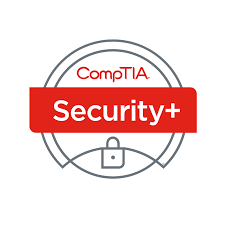Are you ready to take your CompTIA Security+ certification exam? We recently polled our certified Security+ instructors to find out the top reasons candidates fail their CompTIA Security+ exam on the first attempt and the answers were surprising to say the least.
The 5 Most Common Reasons People Fail The Security+ Exam
1. They Underestimate The Depth Of Knowledge Necessary
Many students assume they can take one bootcamp course and they will have enough information to pass the exam. However, it’s really not quite that simple.
Students, who meet the prerequisite knowledge of CompTIA A+ and Network+ combined with on the job experience with the Security+ domain areas, can likely enroll in a bootcamp for exam preparation and be successful on the Security+ exam. However, if you are missing any of these prerequisite elements, then you need to do some additional self study and practice to increase your familiarity with the material before taking the test.
How To Avoid This Pitfall: Before your Security+ training class starts, review the Security+ exam domains and highlight all the areas you are not 100% comfortable with. Read up on those areas before the class and make sure your instructor knows at the beginning these may be trouble areas for you and ask if there are additional resources you can utilize to prepare.
2. They Do Not Enroll In The Right Type Of Training For Their Learning Type
Everyone learns differently. You have visual, auditory, kinesthetic and reading/writing learners. Additionally, people learn best in different environments (in the classroom, online, self-paced, etc.) If you don’t understand the type of learner you are and the environments you learn best in, then you could be setting yourself up for failure by enrolling in the wrong type of training.
How To Avoid This Pitfall: If you are most successful in a classroom environment with an instructor physically in the room, try to understand why that is the case. Is it the accountability of someone watching you? The physical distance between your family/work and the classroom that helps you focus? You can come up with a myriad of answers but the goal is to come up with the answers that are unique to you and then try to replicate that in a virtual environment. For example, if it is physical distance that is helpful, try setting up your virtual learning in a different room that you can lock, don’t bring in your phone or any work documents and lock down access to your company chat, email, etc on your device.
Additionally, being vocal about struggle areas is necessary in any training environment but especially in a virtual environment where an instructor cannot easily recognize when a student is struggling.
3. Not Enough Time Was Spent On Hands-On Activities
A portion of the CompTIA Security+ exam includes performance-based questions in a simulated environment. As such, candidates need to be able to perform the tasks related to the Security+ domains and to do that successfully practice is necessary.
How To Avoid This Pitfall: Before enrolling in a training course, ensure they include several reviewed activities using simulated environments during the course to keep students on track.
4. They Enrolled In The Wrong Class Type
When it comes to Security+ training, you can typically enroll in a 5 day or 40-hour bootcamp that is focused on preparing students to sit for the exam or you can enroll in a longer course that is designed to impart the knowledge and application of the Security+ material. This relates back to the first two pitfalls. You need to be honest about your skill level coming into the class and what you truly need to learn in preparation for the exam. Once you understand this then you can choose the class that is best for you.
How To Avoid This Pitfall: Ask questions about the format of the class before enrolling to understand if it is right for you. Generally speaking a bootcamp will be shorter and focused on exam preparation whereas other training or certificate programs will be longer in length and more focused on the knowledge areas. We offer two methods to prepare for the Security+ exam:
- Certificate in Cyber Foundations ($4,595) offers new to IT students the skills, knowledge and credentials required to successfully begin a career in the field of Information Technology. We designed this program in collaboration with senior executives and technical staff from the Department of Defense, leading Government Contractors, and Fortune 500 companies.
- CompTIA Security+ Bootcamp ($2,295-$2,995) In the CompTIA Security certification course, you will build on your existing IT knowledge and professional experience with CompTIA certification fundamentals, networks, and organizational CompTIA security training as you acquire the specific skills required to implement basic security services on any type of computer network. The course can be taken either as a 40-hour bootcamp or as an 80-hour extended bootcamp and prepares students for CompTIA Security exam and includes an exam voucher.
5. They Don’t Understand The Acronyms
There are at least 100 acronyms within the Security+ content, and there are more than 30 questions on the test that only have acronyms for the question AND acronyms for the answers. If you do not understand the acronyms, you can easily fail the Security+ exam.
How To Avoid This Pitfall: Simply study the acronyms. While you may want to focus solely on understanding the concepts of the material and how to apply them to your work, don’t let the simplicity of memorizing acronyms allow you to put off the actual study, you will need it on the exam.

Register Now For An Upcoming CompTIA Security+ Training Course!
Complete the form below to schedule a time to speak with an Admissions Advisor about our upcoming CompTIA Security+ Training. Classes Available Weekdays, Nights & Weekends!
